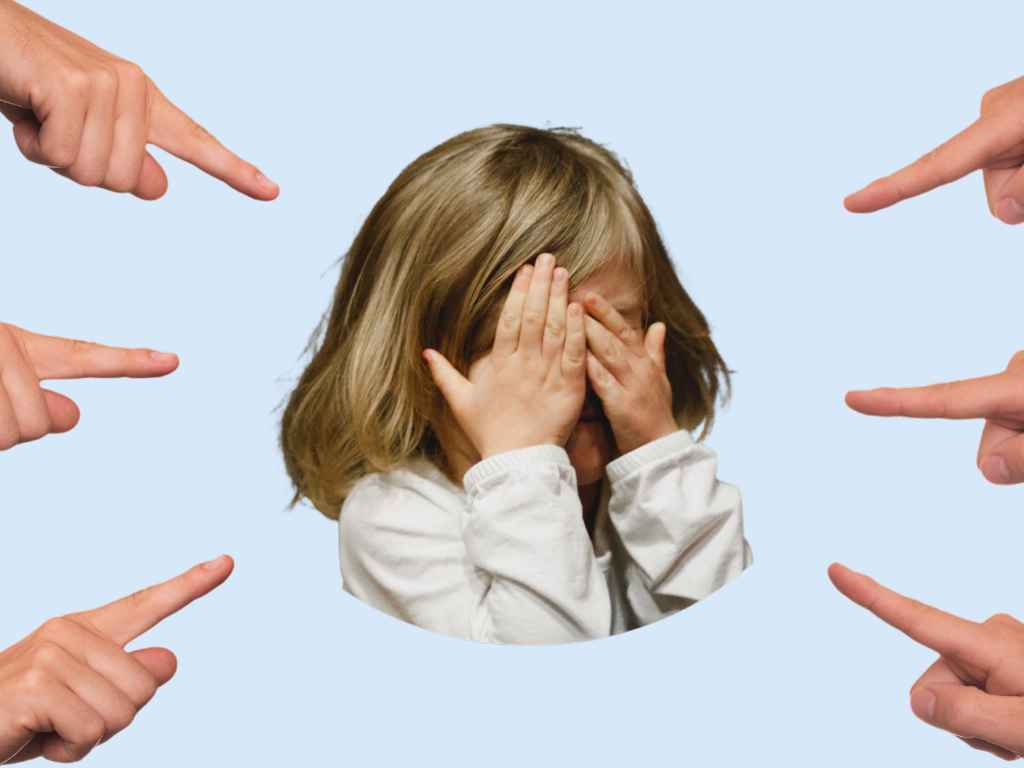
The words childhood dementia don’t usually go together and may even sound like an oxymoron. We don’t tend to think of children when we think of dementia, because dementia is associated with the elderly. When you think about the declining brain health condition known as dementia, you probably think of seniors who suffer memory lapses and other forms of cognitive decline such as confusion and incontinence, because of their advanced age.
However, childhood dementia proves that dementia is not always related to age. And just like adult dementia, childhood dementia limits the quality of the patient’s life.
Dementia is not something the majority of people will associate with kids. However, childhood dementia is a reality for some children and their families. Today, around 700,000 children worldwide grapple with childhood dementia. Sadly, many people from healthcare professionals and researchers, to the general public, are unaware of this debilitating disease in children. Thus, it’s important to shine a light on this issue of childhood dementia, because the lack of awareness can create barriers to understanding and finding supportive care.

Defining Childhood Dementia
Childhood dementia refers to progressive neurodegenerative or brain damage caused by specific rare genetic disorders. More than 250 disorders affect the cognitive abilities of children and adolescents. These children are usually born with these underlying genetic issues, so childhood dementia is not contagious, but rather in their DNA.
Because the rare genetic disorders that result in childhood dementia vary, each child’s experience with childhood dementia is also unique. For example, childhood dementia symptoms could appear in young toddlers and progress rapidly. Meanwhile, other kids could experience symptoms as teenagers with damage slowly but inexorably occurring through months or years. But no matter the age of onset, what all these cases have in common is that childhood dementia is progressive and brain damage is irreversible. As of today, there is still no cure for childhood dementia.
This means that as the days go by, the patient’s brain will continually suffer damage, and cognitive decline will continue. It is heartbreaking, because family members who care for the children see them lose skills they’ve just gained like walking, reading, talking, or writing. There is also a painful knowledge that there are many skills childhood dementia patients will not have an opportunity to explore and learn.
Eventually, the brain loses its ability to keep organs functioning correctly. Sadly, most patients diagnosed with childhood dementia won’t reach adulthood.

What Causes Childhood Dementia?
The leading cause of dementia’s onset in children around the globe is due to neuronal ceroid lipofuscinoses (NCLs). These NCLs have a prevalence of 7 to 8 children per 100,000 births worldwide. NCLs refers to a group of genetic, neurodegenerative, and lysosomal disorders typically inherited following an autosomal recessive inheritance pattern. What does this mean?
Recessive inheritance needs two copies of mutated genes from the mom and dad for the disease to manifest in the child. Typically, both parents don’t have symptoms but are carriers of the disease. If only one parent is a recessive gene carrier, the baby will show no symptoms but could also be a carrier. Hence, this makes this disease very rare because the probability of a child manifesting symptoms is low as both parents must be carriers.
But still, childhood dementia is a cause for concern. It stems from hereditary genetic defects, particularly NCLs that result in impaired brain functioning. This means building blocks for the structure and maintenance of neurons and brain tissues are missing or not properly metabolized. Consequently, brain neurons are damaged and eventually die. These NCL disorders are subdivided into the following types based on the onset of symptoms and other clinical manifestations:
- Congenital: onset at birth or near the newborn stage with seizures and microcephaly
- Infantile: Onset is 6 to 24h months, typically with seizures, vision loss, and deterioration of motor skills
- Late-infantile: Onset at 2 to 7.5 years old with the same symptoms above
- Juvenile: Onset at 4 to 10 years old with the same symptoms above
- Adult form: Onset at 15 to 50 years old usually with Kuf’s or Parry disease
The most prevalent forms of NCLs are late-infantile and juvenile with a typical life expectancy of 8 to 12 years. In most cases, kids and adolescents with childhood dementia grow up in the early years without any noticeable problems. They hit age-appropriate and developmental milestones. However, once the disease manifests, they lose their abilities consistently and continuously until their demise.
Apart from NCLs, the other causes of childhood dementia may be X-linked adrenoleukodystrophy (X-ALD), Alpers Syndrome, or multiple sulfatase deficiency. Lysosomal storage diseases like Niemann-Pick disease type-C (NPC) and mucopolysaccharidoses are also inherited neurodegenerative diseases that result in childhood dementia. But these cases are rare compared to NCLs.
What Are the Signs of Childhood Dementia?
Just like older adults who live with dementia, kids diagnosed with childhood dementia can experience the following:
- Memory loss
- Confusion
- Difficulty concentrating
- Sleep issues
- Learning problems
- Communication issues
- Personality and behavioral changes
- Emotional problems like fear and anxiety
- Loss of motor skills
- Hearing and visual impairments
- Onset of seizures
How early symptoms appear and how swiftly they worsen usually depends on the form of neurodegenerative disease that assails the child. The patients become increasingly dependent on adults for care until they eventually become bedridden. It is not uncommon for death to occur within the first two decades of life, with many children dying before they turn 18 years old.
What are the Treatment Options?
Sadly, no treatments exist to stop or slow down childhood dementia. Instead, medication and therapies may be given to alleviate symptoms. Treatments can be the following:
- Use of muscle relaxants to treat muscle stiffness
- Sleep aides for accompanying sleep disorders
- Anti-Seizure medications
- Antidepressants for mental, emotional, and behavioral deficits
- Nutrition care
- Physical, occupational, and speech therapy
- Counseling
Children diagnosed with childhood dementia require lifelong care and supervision because they suffer extremely debilitating symptoms that cannot be reversed. Sadly, the younger a child is diagnosed, the worse the potential outcomes. Usually, those who are diagnosed before their first birthday are not expected to live past the age of 10.
To make things worse, early diagnosis is also difficult, because initial symptoms may be attributed to other illnesses. Unfortunately, delays in diagnosis could lead to more pain and premature death in children.
Why is Awareness of Childhood Dementia So Low?
Most people have not heard about childhood dementia, so if it’s the first time you’re learning more about this rare health problem in children, you are not alone.
Because childhood dementia stems from rare genetic circumstances, it is often overlooked. The lack of information and rarity of this life-threatening illness could also result in a late or incorrect diagnosis. Consequently, this means setbacks in getting proper treatment to alleviate the patient’s symptoms, as well as delays in supportive therapies for parents who need help in coping with this life-changing diagnosis.
Knowing that such a condition could be a possibility for your kids when you start a family, it is important to assess your genetic health risks before you become pregnant. Taking a CircleDNA Family Planning DNA Testing Kit can help you discover potential hereditary illnesses and disease risks that you and your partner could pass to your future offspring. Being educated on this aspect is vital for family planning. In this DNA testing kit, you’ll find out if you carry any genetic mutations that you could pass on to your children.
Many people who have a strong family history of severely dangerous or debilitating diseases opt not to have biological children, and adopt instead. Others who have the financial means rely on IVF and embryo screening to prevent passing harmful and disease-causing genetic mutations to their children. Having a discussion on family history and diseases with your partner is crucial. Taking a DNA test for family planning purposes is a responsible form of preventive health that enables you to watch out for the well-being of your future kids and family.
References:
- Shining a light on childhood dementia (Alzheimer’s Disease International) (https://www.alzint.org/news-events/news/shining-a-light-on-childhood-dementia/
- Childhood dementia (DZNE) https://www.dzne.de/en/news/background/childhood-dementia/
- Causes of Childhood Dementia (Sanchari Sinha Dutta) https://www.news-medical.net/health/Childhood-Dementia-Causes.aspx
- NCL Disorders: Frequent Causes of Childhood Dementia (Angela Schulz & Alfried Kohlschutter) https://www.ncbi.nlm.nih.gov/pmc/articles/PMC3943077/
- What is childhood dementia? (Childhood Dementia Initiative) (https://www.childhooddementia.org/what-is-childhood-dementia






